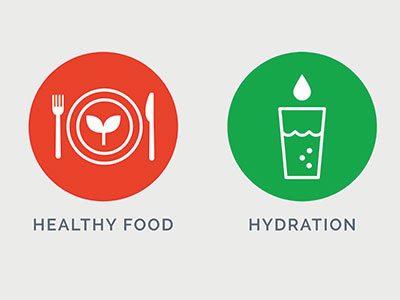As a parent, I’ve had more experience than I’d like with the dreaded temper tantrums. From my 2-year-old’s meltdowns over not being able to wear a costume to school or when I forget that she likes to take off the top of the applesauce herself, to my 5-year-old becoming a weepy mess when over-tired.
Normal versus abnormal tantrums
I’ve had parents ask me what distinguishes a developmentally normal tantrum from something they should be concerned about and address. There is some research in this area that has identified key differences between good, old-fashioned tantrums and signs that a child might be struggling with a larger problem, be it sleep deprivation, illness, anxiety, depression or other mood or behavioral disorders.
Eighty percent of all preschoolers have tantrums from time to time, but it is not typical to have daily tantrums. Normative tantrums are often in response to clear cues like frustration, jealousy or fatigue. Tantrums that may be cause for concern are more likely to happen without a clear trigger or “out of the blue.”
Key elements of normal tantrums
For preschoolers, here are some key elements of tantrums that have been found to distinguish children with disruptive, depressive or anxiety symptoms from their healthy peers:
- Duration of tantrums. Healthy preschoolers tend to have shorter tantrums, lasting less than 25 minutes, whereas children with tantrums lasting longer than 25 minutes may be more likely to have other behavioral or mood concerns
- Frequency of tantrums. A higher frequency of tantrums may be an indicator of a more serious behavioral or mood concern if tantrums occur:
- At the rate of more than five tantrums per week at school or outside of the home
- 10 to 20 discrete episodes on separate days during a 30-day period at home
- Quality of the tantrum. The following are all indicators of potentially serious behavioral or mood concerns if they occur during the tantrum:
- Inability for the child to calm down without the assistance of a caregiver
- Display of aggression towards other people or objects more than 50 percent of the time during tantrums
- Attempt to hurt themselves during the tantrum, which may indicate the presence of depression
What can parents do about abnormal tantrums?
If your child is showing signs that their tantrums may indicate a larger problem, it is very important that you seek help immediately. Psychologists or psychiatrists who specialize in early childhood are a good place to start. They can help evaluate your child to identify the underlying concerns and create a treatment plan.
It is very distressing to parents and children, as well as disruptive to home and school, when temper tantrums occur frequently and with severity. There are treatments available that can work to improve children’s functioning, the parent-child relationship and school functioning. Getting your child the help he or she needs can prevent larger problems from developing and can provide him or her with important skills to manage their emotions as a child and as an adult.
References
- Belden, A.C., Thomson, N.R., & Luby, J.L. (2008). Temper tantrums in healthy versus depressed and disruptive preschoolers: Defining tantrum behaviors associated with clinical problems. Journal of Pediatrics, 152, 117-122.
- Wakschlag, L.S., Choi, S.W., Carter, A.S., Hullsiek, H., Burns, J., McCarthy, K., Leibenluft, E., & Briggs-Gowan, M.J. (2012). Defining the developmental parameters of temper loss in early childhood: Implications for developmental psychopathology. Journal of Child Psychology and Psychiatry, 53(11), 1099-1108.
 https://riseandshine.childrensnational.org/wp-content/uploads/2025/11/two-friends-feature.jpg
300
400
Danielle Robbins
https://riseandshine.childrensnational.org/wp-content/uploads/2017/11/childrens_riseandshine_logo.jpg
Danielle Robbins2025-11-13 13:55:082025-11-14 10:17:49Navigating friendships when your child has epilepsy
https://riseandshine.childrensnational.org/wp-content/uploads/2025/11/two-friends-feature.jpg
300
400
Danielle Robbins
https://riseandshine.childrensnational.org/wp-content/uploads/2017/11/childrens_riseandshine_logo.jpg
Danielle Robbins2025-11-13 13:55:082025-11-14 10:17:49Navigating friendships when your child has epilepsy





















Leave a Comment
Want to join the discussion?Feel free to contribute!